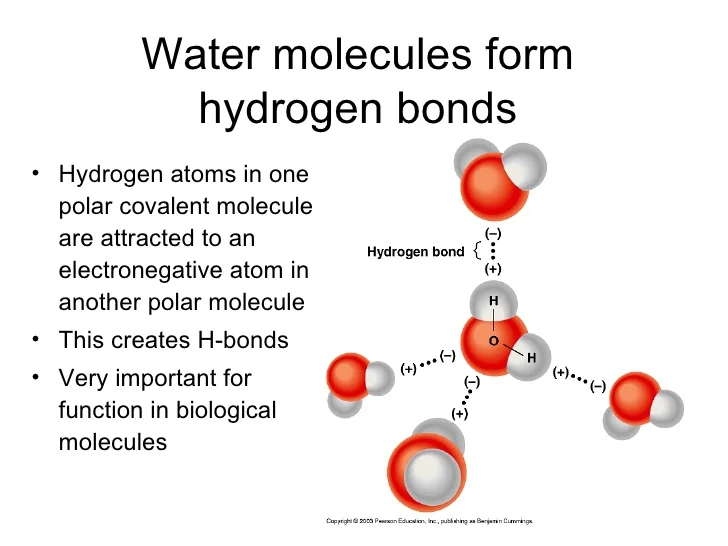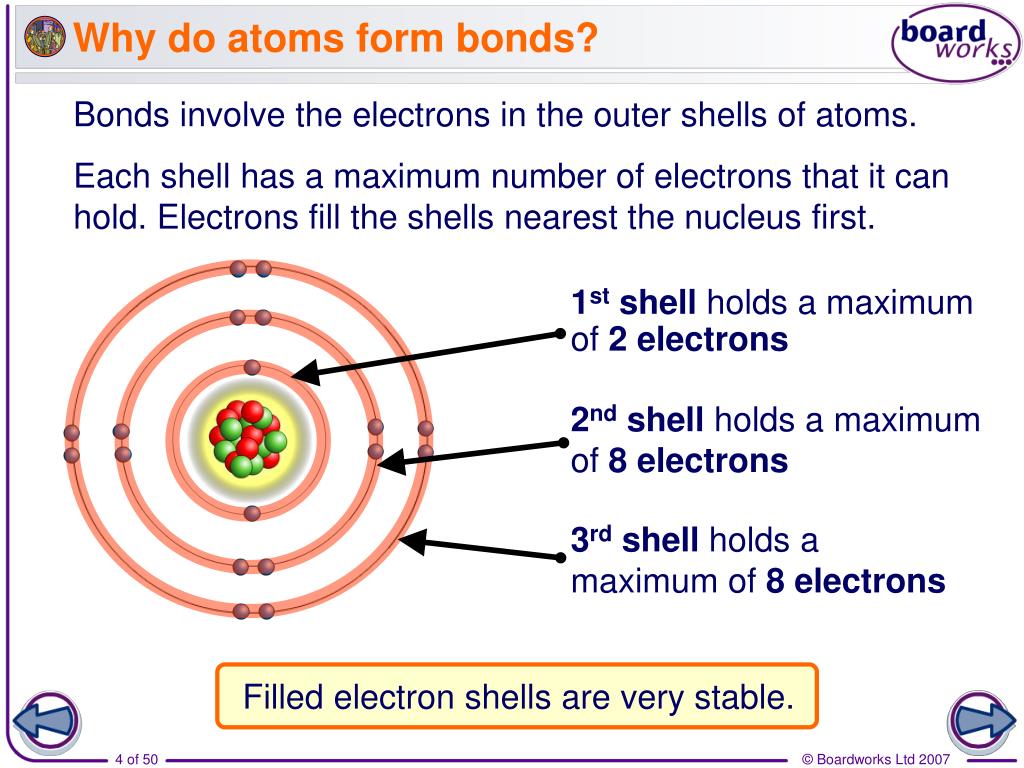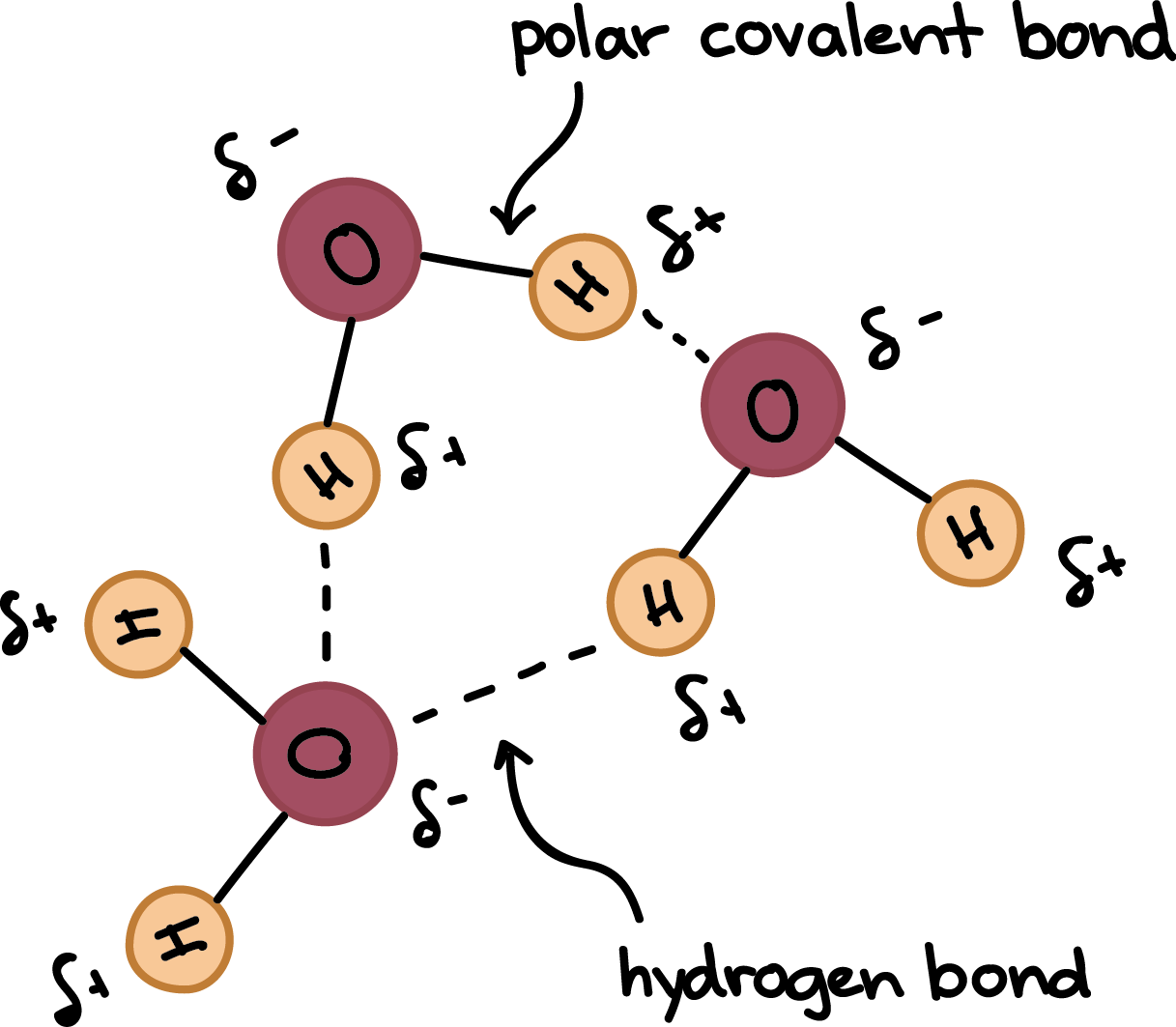How Many Bonds Can Water Form
How Many Bonds Can Water Form - The electrons involved are in the outer shells of the atoms. Web the water molecule is not linear but bent in a special way. So each water molecule can form a maximum of four hydrogen bonds. There are exactly the right numbers of δ + hydrogens and lone pairs for every one of them to be involved in hydrogen bonding. Web water molecule can have/form a maximum of four hydrogen bonds: It is eight to form a single h2o molecule. Look for how many electrons are needed: Single covalent bonds between each oxygen and hydrogen atom. Web water is capable of participating in 4 hydrogen bonds at once, granted it only does this when it forms a perfect crystal structure. Another hydrogen bond can be formed using the other lone pair on the oxygen atom.
Every water molecule can be hydrogen bonded with up to three other water molecules (see fig. The answer is both, but it depends on how you count it. Web a molecule of water has two hydrogen atoms. There are exactly the right numbers of δ + hydrogens and lone pairs for every one of them to be involved in hydrogen bonding. Web up to 4 hydrogen bonds can form between a single water molecule and other water molecules. Web water molecule can have/form a maximum of four hydrogen bonds: The o―h distance ( bond length) is 95.7 picometres (9.57 × 10 −11 metres, or 3.77 × 10 −9 inches). Web because of its polarity and ability to form hydrogen bonds, water makes an excellent solvent, meaning that it can dissolve many different kinds of molecules. Two given through the h atoms (towards two other h2o molecules), and two received on the o atom (from h atoms of two other h2o. All of the electron pairs—shared and unshared—repel each other.
Atoms are the smallest units of matter that still retain the fundamental chemical properties of an element. Each oxygen atom in a water molecule has two lone pairs of electrons, which can form hydrogen bonds with two hydrogen atoms in other water molecules. Single covalent bonds between each oxygen and hydrogen atom. There are exactly the right numbers of δ + hydrogens and lone pairs for every one of them to be involved in hydrogen bonding. Web look for the total valence electrons: An atom that shares one or more of its. The two hydrogen atoms are bound to the oxygen atom at an angle of 104.5°. Find the total number of bonds forming: Other molecules like hydrogen fluoride , ammonia, and. Web in water, each hydrogen nucleus is covalently bound to the central oxygen atom by a pair of electrons that are shared between them.
Water Review
Each oxygen atom in a water molecule has two lone pairs of electrons, which can form hydrogen bonds with two hydrogen atoms in other water molecules. Web water can form four bonds. Web so, does water make 4 bonds or 2? Water in a plant cell or the lizard walking on water. It makes two with the hydrogen and accepts.
How many hydrogen bonds a water molecule can form Hydrogen Bonding in
Web notice that each water molecule can potentially form four hydrogen bonds with surrounding water molecules: Web since carbon has 4 valence electrons, it can bond with 4 hydrogen atoms (that have 1 valence electron) to reach the preferred 8 valence electrons. Web because of its polarity and ability to form hydrogen bonds, water makes an excellent solvent, meaning that.
😎 What properties of water make it essential to life. Why Water Is
Web a single water molecule can participate in a maximum of four hydrogen bonds because it can accept two bonds using the lone pairs on oxygen and donate two hydrogen atoms. Web molecules are the simplest unit of a covalent compound, and molecules can be represented in many different ways. The electrons involved are in the outer shells of the.
__TOP__ How Many Covalent Bonds Can Chlorine Form
All of the electron pairs—shared and unshared—repel each other. Web so, does water make 4 bonds or 2? This is because the oxygen atom, in addition to forming bonds with the hydrogen atoms, also carries two pairs of unshared electrons. The electrons involved are in the outer shells of the atoms. Web water can form four bonds.
How Many Bonds Can Nitrogen Form Jacks Of Science
Web a water molecule consists of two hydrogen atoms bonded to an oxygen atom, and its overall structure is bent. Web in water, each hydrogen nucleus is covalently bound to the central oxygen atom by a pair of electrons that are shared between them. Web molecules are the simplest unit of a covalent compound, and molecules can be represented in.
Atomic Structure And Chemical Bonds Worksheet Answer Key Free Nude
It is four for one water (h2o) molecule according to the octet rule. Both an oxygen atom and 2 hydrogen atoms in one molecule can participate in hydrogen bonding with another molecule of water and that molecule can hydrogen bond the same way to yet a third molecule of water. Single covalent bonds between each oxygen and hydrogen atom. Other.
Water
Much of the study of chemistry, however, involves looking at what happens when atoms combine with other atoms to form. Single covalent bonds between each oxygen and hydrogen atom. Both of these atoms can form a hydrogen bond with oxygen atoms of different water molecules. Each hydrogen atom in the molecule can also form a hydrogen bond. Water in a.
The Unique Properties Of Water How Hydrogen Bonding Affects Our Body
Web look for the total valence electrons: Both of these atoms can form a hydrogen bond with oxygen atoms of different water molecules. The answer is both, but it depends on how you count it. Clinging of one substance to another. Web up to 4 hydrogen bonds can form between a single water molecule and other water molecules.
PPT What are bonds? PowerPoint Presentation, free download ID5980343
The two hydrogen atoms are bound to the oxygen atom at an angle of 104.5°. Web so far, we’ve drawn this water molecule with one hydrogen bond. One interesting consequence of this is that water forms a 3d crystalline structure that is sort of based on a distorted tetrahedron. The o―h distance ( bond length) is 95.7 picometres (9.57 ×.
What is the name and type of bonds present in water Science
Atoms are the smallest units of matter that still retain the fundamental chemical properties of an element. Find the total number of bonds forming: Other molecules like hydrogen fluoride , ammonia, and. Web molecules are the simplest unit of a covalent compound, and molecules can be represented in many different ways. It is eight to form a single h2o molecule.
However, Because Hydrogen Bonds Are Weaker Than Covalent Bonds, In Liquid Water They Form, Break, And.
One interesting consequence of this is that water forms a 3d crystalline structure that is sort of based on a distorted tetrahedron. Every water molecule can be hydrogen bonded with up to three other water molecules (see fig. Clinging of one substance to another. Web molecules are the simplest unit of a covalent compound, and molecules can be represented in many different ways.
Since Oxygen Has 6 Valence Electrons, It Only Needs To Bond With 2 Hydrogen Atoms In Order To Reach The Preferred 8 Valence Electrons.
Web notice that each water molecule can potentially form four hydrogen bonds with surrounding water molecules: Web up to 4 hydrogen bonds can form between a single water molecule and other water molecules. So each water molecule can form a maximum of four hydrogen bonds. Two with the hydrogen atoms and two with the with the oxygen atoms.
Web So, Does Water Make 4 Bonds Or 2?
Single covalent bonds between each oxygen and hydrogen atom. Find the total number of bonds forming: Web so far, we’ve drawn this water molecule with one hydrogen bond. Does ammonia make 1 bond or 2?
Web In Water, Each Hydrogen Nucleus Is Covalently Bound To The Central Oxygen Atom By A Pair Of Electrons That Are Shared Between Them.
Web the water molecule is not linear but bent in a special way. It is eight to form a single h2o molecule. It is four for one water (h2o) molecule according to the octet rule. The two hydrogen atoms are bound to the oxygen atom at an angle of 104.5°.









